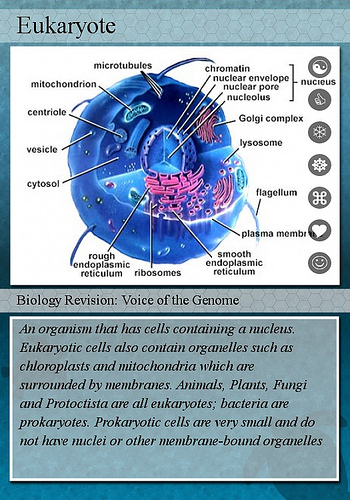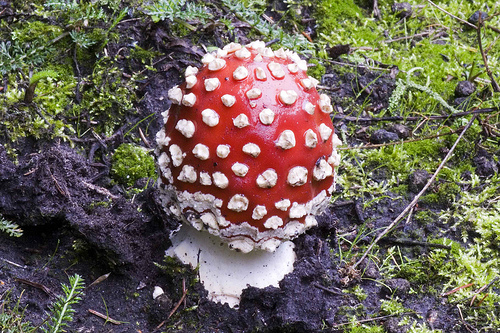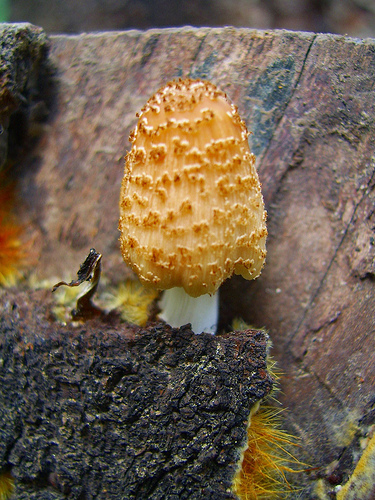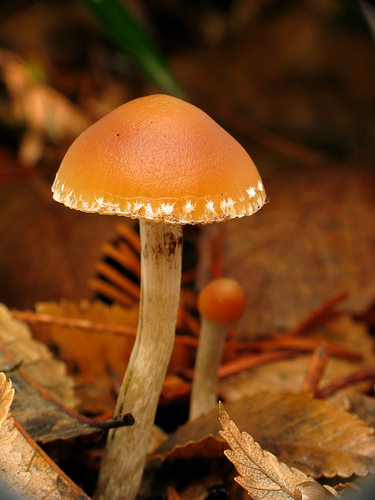Classification-
This page takes you through each level of classification, and explains the characteristics of each category. When classifying organisms, the Domain, of which there are three, is the largest level. Each Domain is broken down into several Kingdoms. A Kingdom is then split into separate Phyla and so on until we reach the most exclusive category which is known as the specific epithet, or species.
Domain
Eukarya: organisms within the Domain Eukarya contain a membrane-bound nucleus as well as membrane-bound organelles. Eukaryotes
include organisms such as plants, animals, fungi, and protists.
membrane-bound nucleus as well as membrane-bound organelles. Eukaryotes
include organisms such as plants, animals, fungi, and protists.
Kingdom
Fungi: The Fungi Kingdom includes a vast array of
organisms that all share one characteristic in particular that deals with
acquiring nutrients. Unlike animals, which first ingest and then digest, all
fungi digest their food before they even ingest it!
 They accomplish this by
secreting exoenzymes into their environment and into their food source that
are able to breakdown a wide variety of organic compounds. Simply put, this
unique method of food acquisition has expanded the fungi's 'menu', if you
will, to where they can now consume almost anything aside from certain
synthetic materials such as plastics.
Cyathus striatus is another example of an organism within the Fungi
Kingdom. Follow the link to read up on this organism that is also on
MultipleOrganisms.net!
They accomplish this by
secreting exoenzymes into their environment and into their food source that
are able to breakdown a wide variety of organic compounds. Simply put, this
unique method of food acquisition has expanded the fungi's 'menu', if you
will, to where they can now consume almost anything aside from certain
synthetic materials such as plastics.
Cyathus striatus is another example of an organism within the Fungi
Kingdom. Follow the link to read up on this organism that is also on
MultipleOrganisms.net!
Phylum
Basidiomycota: Also known as the 'club fungus,' members of
the Basidiomycota display the club-like fruiting body that most people
associate with mushrooms. Interestingly, this structure is literally only
the 'tip of the ice berg' when considering the entire fungal organism itself
because the majority of the fungus lies underneath the surface where
branching structures known as hyphae extend throughout the surrounding area
and harness nutrients for the fungus. In a way, this would be comparable to
the roots of a plant.
Lentinula edodes is another organism within the basidiomycota.
Follow the link to read up on this organism that is also a webpage on
MultipleOrganisms.net
Interestingly, this structure is literally only
the 'tip of the ice berg' when considering the entire fungal organism itself
because the majority of the fungus lies underneath the surface where
branching structures known as hyphae extend throughout the surrounding area
and harness nutrients for the fungus. In a way, this would be comparable to
the roots of a plant.
Lentinula edodes is another organism within the basidiomycota.
Follow the link to read up on this organism that is also a webpage on
MultipleOrganisms.net
Class
Basidiomycetes: The class of fungi in which compatible nuclei fuse in a club-structure called a basidium with the resulting diploid nucleus undergoing meiosis. The four haploid products of meiosis move through stalks (sterigmata) to the outside of the basidium where they enter developing spores (meiospores known as basidiospores). The gill, pore, tooth, and some cup mushrooms are Basidiomycetes (Chang et al.).
Order
Agaricales: Species from this order are characterized as
having
 the gilled undersides of the fruiting body. These gills play a
crucial role in reproduction because they bear the basidiospores that will
eventually be dispersed into the environment. The Agaricales order is one of
the most common and easily distinguishable orders within the fungi kingdom.
Also found in the Agaricales order is
Schizophyllum commune, which is an organism that has anti-microbial
properties. Follow the link provided to read about this organism!
the gilled undersides of the fruiting body. These gills play a
crucial role in reproduction because they bear the basidiospores that will
eventually be dispersed into the environment. The Agaricales order is one of
the most common and easily distinguishable orders within the fungi kingdom.
Also found in the Agaricales order is
Schizophyllum commune, which is an organism that has anti-microbial
properties. Follow the link provided to read about this organism!
Family
Strophariaceae: Members of this family are characterized as being brown-gilled mushrooms. Fittingly, P. cubensis was previously known as Stropharia cubensis.
Genus
Psilocybe:
 Mushrooms within the Psilocybe genus are set
apart as having hallucinogenic and psychedelic effects.
Mushrooms within the Psilocybe genus are set
apart as having hallucinogenic and psychedelic effects.
Next is a phylogenetic breakdown of P. cubensis.